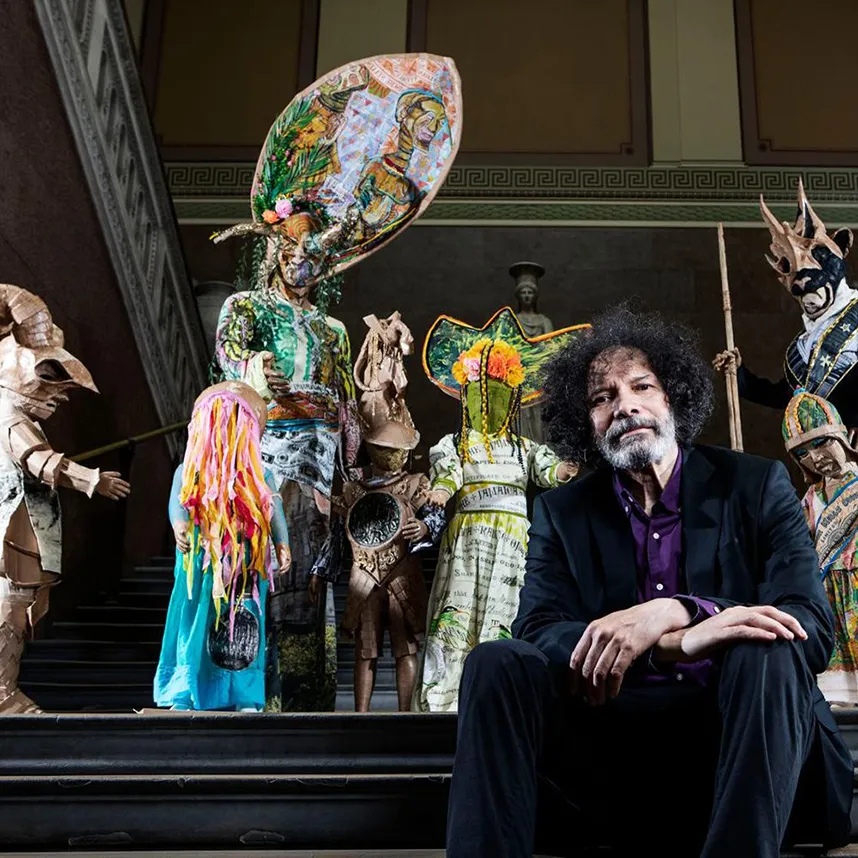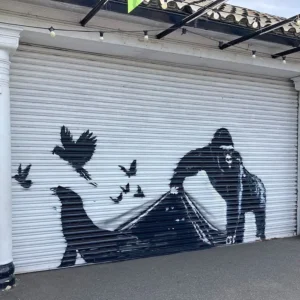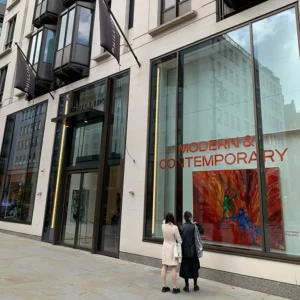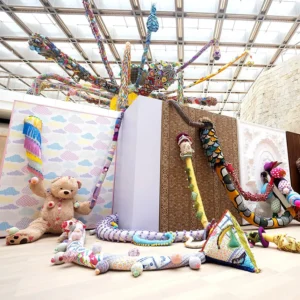Exhibitions around the world in 2024 went beyond spectacle, provoking thought, sparking dialogue, and offering powerful critiques of identity. They highlighted contemporary art’s evolution, engaging bold perspectives that inspire reflection on art’s role in shaping the human experience.
Colonial Narratives
Hew Locke: What Have We Here? sparked a thought-provoking discussion about the legacies of empire, power, and identity by contrasting sculptures by Hew Locke with objects from the colonial era. Locke’s works offered a vision of cultural reclamation while challenging colonial history narratives through the use of beaded ceremonial masks, gilded items, and reinterpreted historical relics.
While thinking about how art may reframe historical memory, visitors were asked to face hard realities about colonial exploitation. The show also has an immersive digital aspect that allowed visitors to use augmented reality to investigate colonial histories, connecting the past and present in a dynamic dialogue.
An Intimate Look at Van Gogh
Van Gogh: Poets and Lovers at the National Gallery in London explores Vincent van Gogh’s emotional universe. Visitors are given the opportunity to view Van Gogh’s artwork as intensely personal manifestations of love, longing, and resiliency, providing an insight into the artist’s emotional challenges.
Alongside selections from the books that influenced him, such as those by Walt Whitman and Charles Baudelaire, are paintings such as The Bedroom and Almond Blossoms. A new perspective on Van Gogh as a person is revealed.
Art and Resilience
The Barbican in London hosted Ricochets, a deeply moving exhibition by Belgian artist Francis Alÿs. The show focused on the resilience of children in conflict zones, blending themes of play, survival, and vulnerability.
Through video installations, drawings, and interactive elements, Alÿs explored how children adapt to and resist the harsh realities of war through imaginative play. One notable highlight was a film that captured children in Kabul crafting games from discarded materials, turning remnants of violence into symbols of hope and empowerment.
The Power of Textiles in Activism
Unravel: The Power and Politics of Textiles in Art at the Barbican explored the role of fabric and thread as mediums of resistance and identity. The exhibition, which featured artists from a variety of ethnic backgrounds, demonstrated how textiles might express compelling narratives about everything from feminist movements to Indigenous activism.
The complex weaving, embroidery, and fabric manipulation that expressed themes of cultural history, resilience, and oppression captivated the viewers.
Amplifying Marginalized Voices
The Brooklyn Museum in New York reimagined its American art galleries in an ambitious effort to commemorate its bicentennial. The new installation offered a more inclusive narrative of American art while challenging established art historical hierarchies.
Less well-known masterpieces by early Black and Indigenous artists were on show alongside iconic pieces by artists like Jean-Michel Basquiat, Faith Ringgold, and Kara Walker. The exhibition focused on themes of community, resiliency, and resistance while considering how race, gender, and class intersected to shape American culture.
Art and Technology
Pierre Huyghe’s Liminal at the Centre Pompidou in Paris blurred the lines between artificial intelligence and human agency. Huyghe created dynamic artworks using AI that changed in real time in response to environmental data and visitor interactions.
The immersive show provided a window into the future of art-making in a world that is becoming more and more digital, challenging conventional ideas of authorship.





